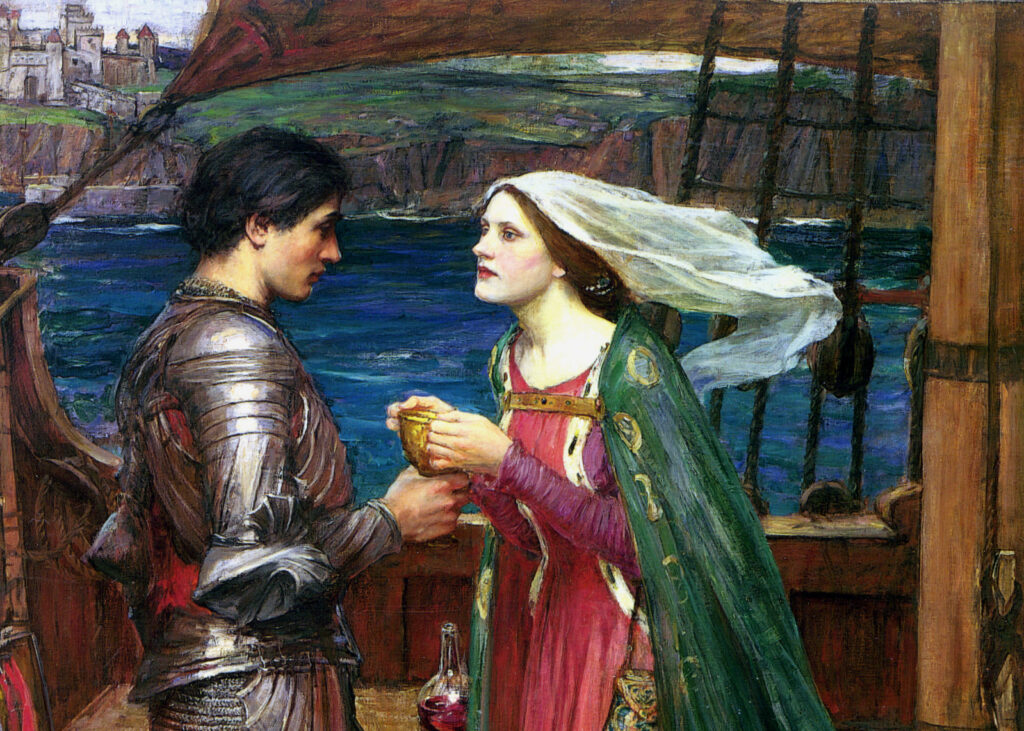Home » Posts tagged 'death' (Page 3)
Tag Archives: death
The Romance of Tristan and Iseult
(Le Roman de Tristan et Iseut)
Joseph Bédier
1900
(A knight and a lady pursue their magical love through bloodshed and sorrow.)

When tales pass through centuries of retellings, they tend to become what of audio media we would call “overproduced”: too many interpreters have slanted the story their various ways, too many embellishments and new episodes have been inserted, too many accommodations and updates have aimed at suiting the fancies of each audience. In the process the story can lose some of its grip on our imagination and our romantic sensibilities. It can be so cobbled and abused that we are left to distill the heart of it as best we can from a variety of sources. The only way such a beautiful old tale could ever be told today in anything like its original form and spirit, would be for three literary virtues to unite: a single author must be simultaneously an expert scholar, a great poet, and above all, modest. Only a scholar will know the history of the work; will be able to distinguish the wheat from the chaff in elements of theme, characterization, and plot; and will sufficiently understand an ancient teller’s perspective so as to effectively reproduce it. And only a great poet will be able to convey this perspective, and the story itself, with convincing unity and supreme skill; expectations of quality and beauty are lofty when we pick up a beloved and popular story. And finally, many a great poet and scholar will have great pride as well, in which case there will be too much of the writer and not enough of the legend in the text. Granted, we love our authors’ egos when it is them we want to see; but if the aim is to represent something of the original (or at least old) character of a romance, an author must exercise admirable self-control. We can thank Joseph Bédier for being this author in all respects for the legend of Tristan & Iseult.
Pearl
The West Midlands Poet
14th century
(A father struggles to recover faith and peace after losing his baby daughter.)

Diversity of structure is one of the wonders of poetry. Today’s poets often celebrate freedom from structure, which has its own beauty. The medieval mind cherished a different kind of beauty, one that is neither extinct nor obsolete today, just overlooked. It is the elegant euphony of placing what one wishes to convey into a strict, unifying framework. Rather than delivering a point casually or even haphazardly as we may do in everyday life, the medieval poet would conform ideas to a predetermined scheme of alliteration, rhyme, stress, mid-line breaks (caesurae), and a multilevel organization of lines into stanzas and groups of stanzas, interconnected by strands of repetition. Surely it is a handicap to expression—but this is part of its charm! The skill required to create a meaningful poem that has a detailed or complicated structure is so great that its demands separate the geniuses from the dabblers. Modern poetic sensibilities may balk at this comment, but in this age where much art and poetry is still very polarized into distinct “high” and “low” forms, I think these sensibilities are a little hypocritical. It seems in fashion today both to create art that only a fraction of society can understand, and at the same time to repudiate notions of hierarchy, including hierarchy of understanding, wherever they appear. Generally the medieval mind, cultivated within the feudal economic and political system and a strongly hierarchical Church, was more candid about social stratification. Medievals did not tend to preach egalitarianism except under God, which would be realized only in another world. This perspective characterized their art as well as society. The structured medieval poem’s handicap to expression is in itself, aside from its resulting euphony or atmosphere, a badge of excellence.


